Shenyu Zhang
Pandora: Leveraging Code-driven Knowledge Transfer for Unified Structured Knowledge Reasoning
Aug 25, 2025Abstract:Unified Structured Knowledge Reasoning (USKR) aims to answer natural language questions by using structured sources such as tables, databases, and knowledge graphs in a unified way. Existing USKR methods rely on task-specific strategies or bespoke representations, which hinder their ability to dismantle barriers between different SKR tasks, thereby constraining their overall performance in cross-task scenarios. In this paper, we introduce \textsc{Pandora}, a novel USKR framework that addresses the limitations of existing methods by leveraging two key innovations. First, we propose a code-based unified knowledge representation using \textsc{Python}'s \textsc{Pandas} API, which aligns seamlessly with the pre-training of LLMs. This representation facilitates a cohesive approach to handling different structured knowledge sources. Building on this foundation, we employ knowledge transfer to bolster the unified reasoning process of LLMs by automatically building cross-task memory. By adaptively correcting reasoning using feedback from code execution, \textsc{Pandora} showcases impressive unified reasoning capabilities. Extensive experiments on six widely used benchmarks across three SKR tasks demonstrate that \textsc{Pandora} outperforms existing unified reasoning frameworks and competes effectively with task-specific methods.
OneEval: Benchmarking LLM Knowledge-intensive Reasoning over Diverse Knowledge Bases
Jun 14, 2025



Abstract:Large Language Models (LLMs) have demonstrated substantial progress on reasoning tasks involving unstructured text, yet their capabilities significantly deteriorate when reasoning requires integrating structured external knowledge such as knowledge graphs, code snippets, or formal logic. This limitation is partly due to the absence of benchmarks capable of systematically evaluating LLM performance across diverse structured knowledge modalities. To address this gap, we introduce \textbf{\textsc{OneEval}}, a comprehensive benchmark explicitly designed to assess the knowledge-intensive reasoning capabilities of LLMs across four structured knowledge modalities, unstructured text, knowledge graphs, code, and formal logic, and five critical domains (general knowledge, government, science, law, and programming). \textsc{OneEval} comprises 4,019 carefully curated instances and includes a challenging subset, \textsc{OneEval}\textsubscript{Hard}, consisting of 1,285 particularly difficult cases. Through extensive evaluation of 18 state-of-the-art open-source and proprietary LLMs, we establish three core findings: a) \emph{persistent limitations in structured reasoning}, with even the strongest model achieving only 32.2\% accuracy on \textsc{OneEval}\textsubscript{Hard}; b) \emph{performance consistently declines as the structural complexity of the knowledge base increases}, with accuracy dropping sharply from 53\% (textual reasoning) to 25\% (formal logic); and c) \emph{diminishing returns from extended reasoning chains}, highlighting the critical need for models to adapt reasoning depth appropriately to task complexity. We release the \textsc{OneEval} datasets, evaluation scripts, and baseline results publicly, accompanied by a leaderboard to facilitate ongoing advancements in structured knowledge reasoning.
Magic Mushroom: A Customizable Benchmark for Fine-grained Analysis of Retrieval Noise Erosion in RAG Systems
Jun 05, 2025Abstract:Retrieval-Augmented Generation (RAG) systems enhance Large Language Models (LLMs) by incorporating external retrieved information, mitigating issues such as hallucination and outdated knowledge. However, RAG systems are highly sensitive to retrieval noise prevalent in real-world scenarios. Existing benchmarks fail to emulate the complex and heterogeneous noise distributions encountered in real-world retrieval environments, undermining reliable robustness assessment. In this paper, we define four categories of retrieval noise based on linguistic properties and noise characteristics, aiming to reflect the heterogeneity of noise in real-world scenarios. Building on this, we introduce Magic Mushroom, a benchmark for replicating "magic mushroom" noise: contexts that appear relevant on the surface but covertly mislead RAG systems. Magic Mushroom comprises 7,468 single-hop and 3,925 multi-hop question-answer pairs. More importantly, Magic Mushroom enables researchers to flexibly configure combinations of retrieval noise according to specific research objectives or application scenarios, allowing for highly controlled evaluation setups. We evaluate LLM generators of varying parameter scales and classic RAG denoising strategies under diverse noise distributions to investigate their performance dynamics during progressive noise encroachment. Our analysis reveals that both generators and denoising strategies have significant room for improvement and exhibit extreme sensitivity to noise distributions. Magic Mushroom emerges as a promising tool for evaluating and advancing noise-robust RAG systems, accelerating their widespread deployment in real-world applications. The Magic Mushroom benchmark is available at https://drive.google.com/file/d/1aP5kyPuk4L-L_uoI6T9UhxuTyt8oMqjT/view?usp=sharing.
Pandora: A Code-Driven Large Language Model Agent for Unified Reasoning Across Diverse Structured Knowledge
Apr 17, 2025



Abstract:Unified Structured Knowledge Reasoning (USKR) aims to answer natural language questions (NLQs) by using structured sources such as tables, databases, and knowledge graphs in a unified way. Existing USKR methods either rely on employing task-specific strategies or custom-defined representations, which struggle to leverage the knowledge transfer between different SKR tasks or align with the prior of LLMs, thereby limiting their performance. This paper proposes a novel USKR framework named \textsc{Pandora}, which takes advantage of \textsc{Python}'s \textsc{Pandas} API to construct a unified knowledge representation for alignment with LLM pre-training. It employs an LLM to generate textual reasoning steps and executable Python code for each question. Demonstrations are drawn from a memory of training examples that cover various SKR tasks, facilitating knowledge transfer. Extensive experiments on four benchmarks involving three SKR tasks demonstrate that \textsc{Pandora} outperforms existing unified frameworks and competes effectively with task-specific methods.
MATEval: A Multi-Agent Discussion Framework for Advancing Open-Ended Text Evaluation
Mar 28, 2024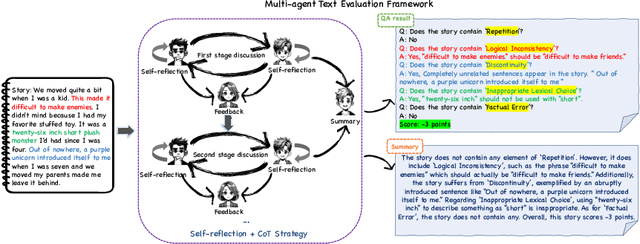


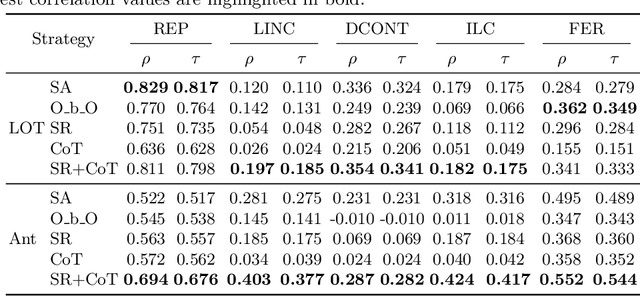
Abstract:Recent advancements in generative Large Language Models(LLMs) have been remarkable, however, the quality of the text generated by these models often reveals persistent issues. Evaluating the quality of text generated by these models, especially in open-ended text, has consistently presented a significant challenge. Addressing this, recent work has explored the possibility of using LLMs as evaluators. While using a single LLM as an evaluation agent shows potential, it is filled with significant uncertainty and instability. To address these issues, we propose the MATEval: A "Multi-Agent Text Evaluation framework" where all agents are played by LLMs like GPT-4. The MATEval framework emulates human collaborative discussion methods, integrating multiple agents' interactions to evaluate open-ended text. Our framework incorporates self-reflection and Chain-of-Thought (CoT) strategies, along with feedback mechanisms, enhancing the depth and breadth of the evaluation process and guiding discussions towards consensus, while the framework generates comprehensive evaluation reports, including error localization, error types and scoring. Experimental results show that our framework outperforms existing open-ended text evaluation methods and achieves the highest correlation with human evaluation, which confirms the effectiveness and advancement of our framework in addressing the uncertainties and instabilities in evaluating LLMs-generated text. Furthermore, our framework significantly improves the efficiency of text evaluation and model iteration in industrial scenarios.
DEE: Dual-stage Explainable Evaluation Method for Text Generation
Mar 18, 2024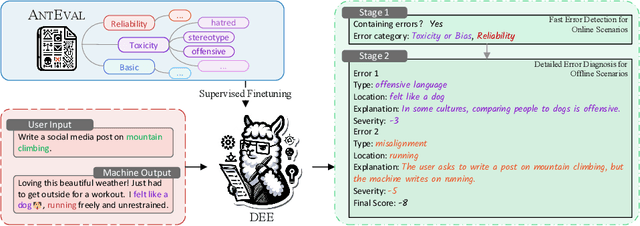
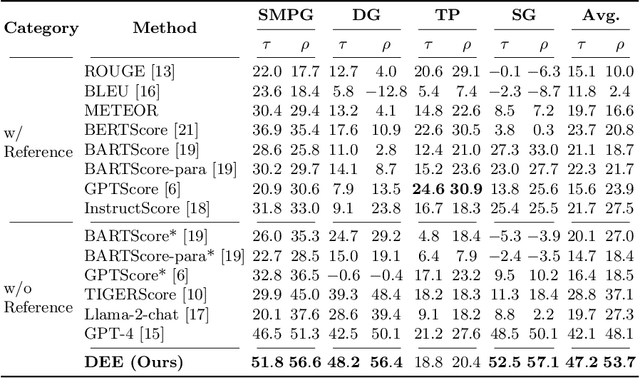
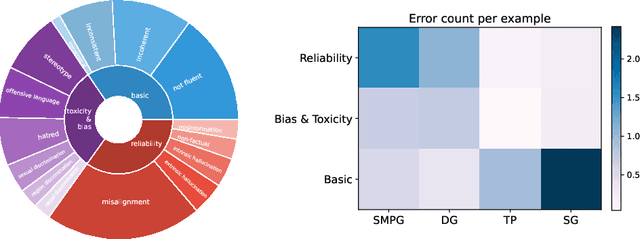

Abstract:Automatic methods for evaluating machine-generated texts hold significant importance due to the expanding applications of generative systems. Conventional methods tend to grapple with a lack of explainability, issuing a solitary numerical score to signify the assessment outcome. Recent advancements have sought to mitigate this limitation by incorporating large language models (LLMs) to offer more detailed error analyses, yet their applicability remains constrained, particularly in industrial contexts where comprehensive error coverage and swift detection are paramount. To alleviate these challenges, we introduce DEE, a Dual-stage Explainable Evaluation method for estimating the quality of text generation. Built upon Llama 2, DEE follows a dual-stage principle guided by stage-specific instructions to perform efficient identification of errors in generated texts in the initial stage and subsequently delves into providing comprehensive diagnostic reports in the second stage. DEE is fine-tuned on our elaborately assembled dataset AntEval, which encompasses 15K examples from 4 real-world applications of Alipay that employ generative systems. The dataset concerns newly emerged issues like hallucination and toxicity, thereby broadening the scope of DEE's evaluation criteria. Experimental results affirm that DEE's superiority over existing evaluation methods, achieving significant improvements in both human correlation as well as efficiency.
Diffusion Models for Reinforcement Learning: A Survey
Nov 02, 2023


Abstract:Diffusion models have emerged as a prominent class of generative models, surpassing previous methods regarding sample quality and training stability. Recent works have shown the advantages of diffusion models in improving reinforcement learning (RL) solutions, including as trajectory planners, expressive policy classes, data synthesizers, etc. This survey aims to provide an overview of the advancements in this emerging field and hopes to inspire new avenues of research. First, we examine several challenges encountered by current RL algorithms. Then, we present a taxonomy of existing methods based on the roles played by diffusion models in RL and explore how the existing challenges are addressed. We further outline successful applications of diffusion models in various RL-related tasks while discussing the limitations of current approaches. Finally, we conclude the survey and offer insights into future research directions, focusing on enhancing model performance and applying diffusion models to broader tasks. We are actively maintaining a GitHub repository for papers and other related resources in applying diffusion models in RL: https://github.com/apexrl/Diff4RLSurvey .
Parameterizing Context: Unleashing the Power of Parameter-Efficient Fine-Tuning and In-Context Tuning for Continual Table Semantic Parsing
Oct 07, 2023


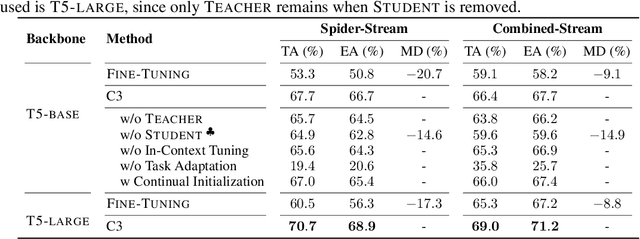
Abstract:Continual table semantic parsing aims to train a parser on a sequence of tasks, where each task requires the parser to translate natural language into SQL based on task-specific tables but only offers limited training examples. Conventional methods tend to suffer from overfitting with limited supervision, as well as catastrophic forgetting due to parameter updates. Despite recent advancements that partially alleviate these issues through semi-supervised data augmentation and retention of a few past examples, the performance is still limited by the volume of unsupervised data and stored examples. To overcome these challenges, this paper introduces a novel method integrating \textit{parameter-efficient fine-tuning} (PEFT) and \textit{in-context tuning} (ICT) for training a continual table semantic parser. Initially, we present a task-adaptive PEFT framework capable of fully circumventing catastrophic forgetting, which is achieved by freezing the pre-trained model backbone and fine-tuning small-scale prompts. Building on this, we propose a teacher-student framework-based solution. The teacher addresses the few-shot problem using ICT, which procures contextual information by demonstrating a few training examples. In turn, the student leverages the proposed PEFT framework to learn from the teacher's output distribution, and subsequently compresses and saves the contextual information to the prompts, eliminating the need to store any training examples. Experimental evaluations on two benchmarks affirm the superiority of our method over prevalent few-shot and continual learning baselines across various metrics.
RITA: Boost Autonomous Driving Simulators with Realistic Interactive Traffic Flow
Nov 11, 2022



Abstract:High-quality traffic flow generation is the core module in building simulators for autonomous driving. However, the majority of available simulators are incapable of replicating traffic patterns that accurately reflect the various features of real-world data while also simulating human-like reactive responses to the tested autopilot driving strategies. Taking one step forward to addressing such a problem, we propose Realistic Interactive TrAffic flow (RITA) as an integrated component of existing driving simulators to provide high-quality traffic flow for the evaluation and optimization of the tested driving strategies. RITA is developed with fidelity, diversity, and controllability in consideration, and consists of two core modules called RITABackend and RITAKit. RITABackend is built to support vehicle-wise control and provide traffic generation models from real-world datasets, while RITAKit is developed with easy-to-use interfaces for controllable traffic generation via RITABackend. We demonstrate RITA's capacity to create diversified and high-fidelity traffic simulations in several highly interactive highway scenarios. The experimental findings demonstrate that our produced RITA traffic flows meet all three design goals, hence enhancing the completeness of driving strategy evaluation. Moreover, we showcase the possibility for further improvement of baseline strategies through online fine-tuning with RITA traffic flows.
Rb-PaStaNet: A Few-Shot Human-Object Interaction Detection Based on Rules and Part States
Aug 14, 2020
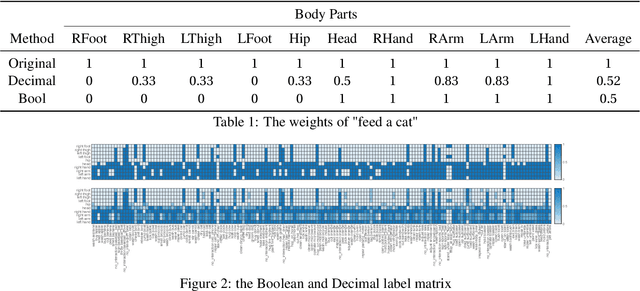

Abstract:Existing Human-Object Interaction (HOI) Detection approaches have achieved great progress on nonrare classes while rare HOI classes are still not well-detected. In this paper, we intend to apply human prior knowledge into the existing work. So we add human-labeled rules to PaStaNet and propose Rb-PaStaNet aimed at improving rare HOI classes detection. Our results show a certain improvement of the rare classes, while the non-rare classes and the overall improvement is more considerable.
 Add to Chrome
Add to Chrome Add to Firefox
Add to Firefox Add to Edge
Add to Edge